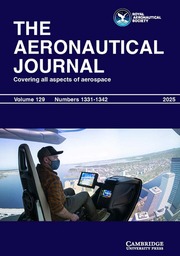No CrossRef data available.
Article contents
A singular perturbation-based adaptive control strategy for flexible joint space manipulators with joint friction
Published online by Cambridge University Press: 30 October 2025
Abstract
Harmonic drives, commonly utilised in space manipulators for high transmission ratios and efficient energy transfer, introduce joint flexibility that leads to issues such as hysteresis, vibration and nonlinear coupling. An adaptive control approach with friction compensation is proposed for flexible joint space manipulators to mitigate joint flexibility and address nonlinear friction issues. According to singular perturbation decoupling, the dynamic system of space manipulators is decomposed into two second-order subsystems with distinct time scales. By introducing the concept of an integral manifold, the two subsystems of fast and slow are refactored into two distinct tracking systems. For the slow subsystem, an adaptive control scheme with friction compensator is designed, employing an enhanced linear parameterisation expression. The friction compensator is designed with a decomposition-based compensation control scheme. Meanwhile, a proportional-derivative (PD) controller is provided for the refactored fast subsystem, which avoids incorporating second-order derivative terms of elastic torques into the proposed controller, thereby enhancing computational efficiency and engineering practicability. Approximate differential filters are utilised to estimate the joint velocities of the links and the differential terms of joint elastic torques, which reduces noise disturbances and improves the robustness of the control system. Notably, a modified compensation scheme is proposed to solve the problem that the conventional singular perturbation method is limited to be utilised in space manipulators with weak joint flexibility. Furthermore, the stability proof of the entire system is conducted according to the Lyapunov stability theorem. Ultimately, simulations and analyses demonstrate that the provided strategy is effective.
Information
- Type
- Research Article
- Information
- Copyright
- © The Author(s), 2025. Published by Cambridge University Press on behalf of Royal Aeronautical Society


